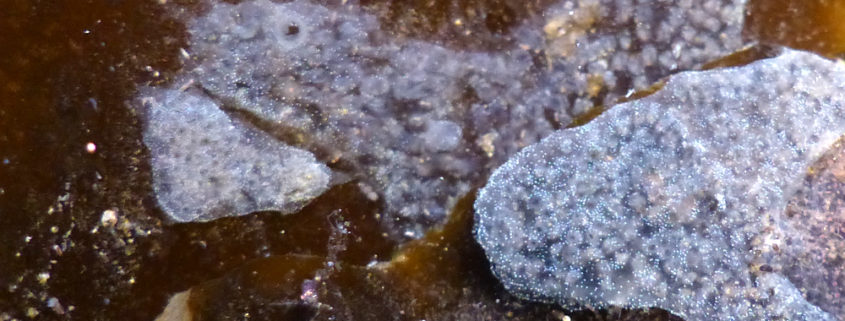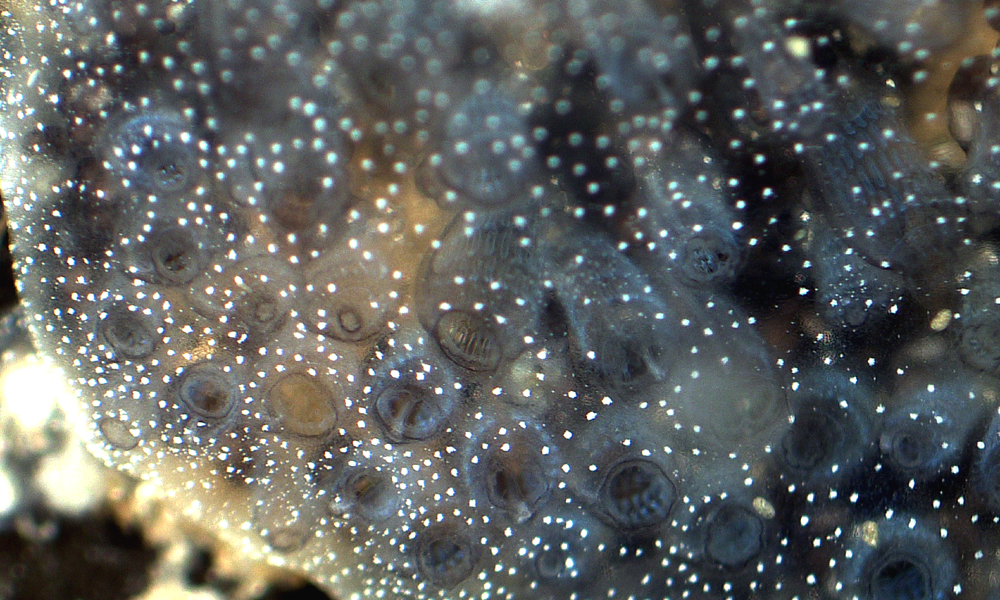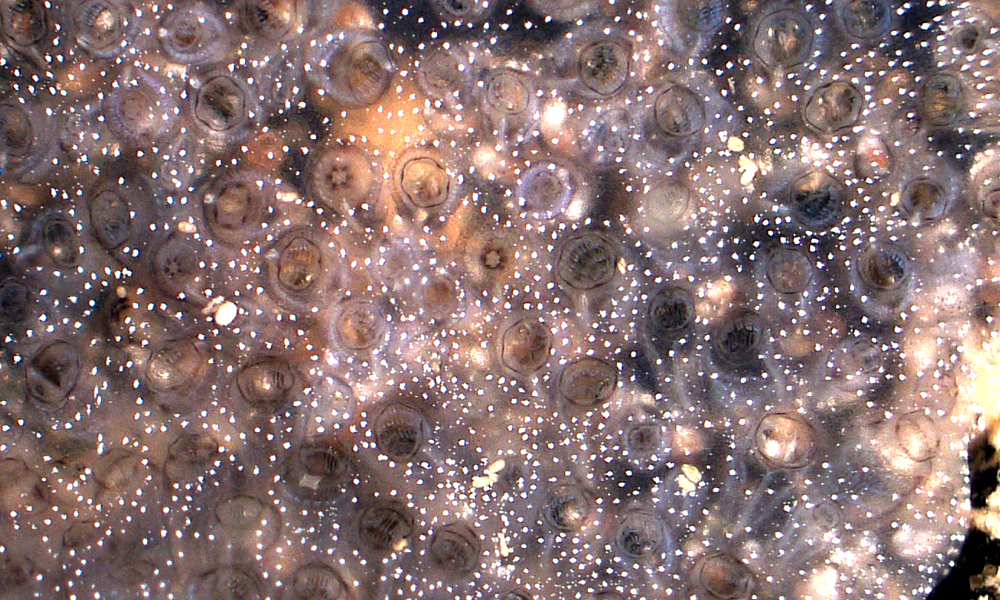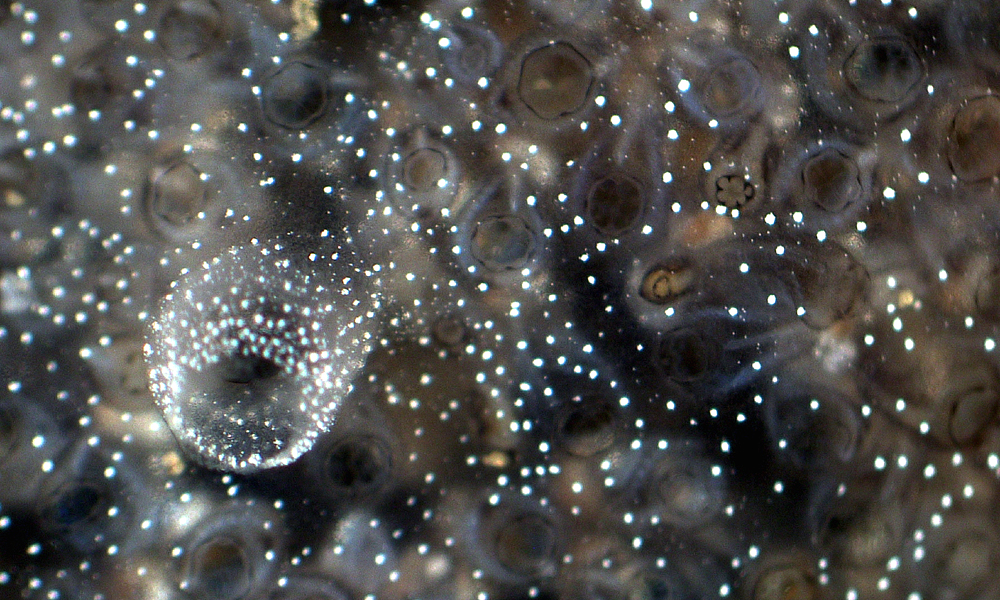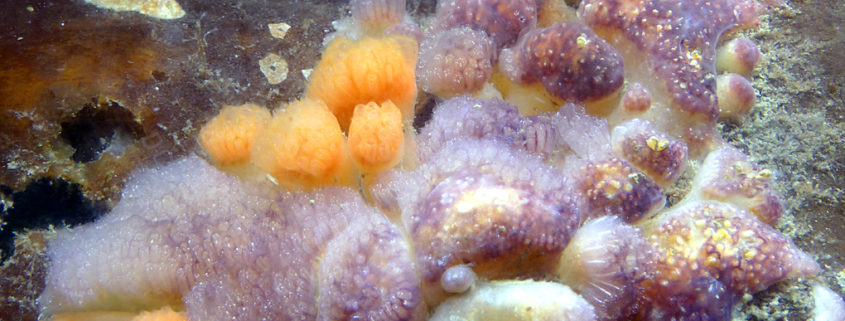Gray Encrusting Compound Tunicate Scientific Name: Diplosoma listerianum This is a common encrusting compound tunicate that is commonly found along docks in the Pacific Northwest. Similar to other tunicates it grows on rocks, barnacles, bivalves, as well as the exoskeleton of a number of crab species. Though it may appear like a gray goo covering kelp that is growing along docks, it can be quite beautiful when viewed under a dissecting microscope. Photos and Video by Noah Elkink References Lamb, Andrew, and Bernard P. Hanby. Marine Life of the Pacific Northwest: a Photographic Encyclopedia of Invertebrates, Seaweeds and Selected Fishes. Madeira Park, BC, Harbour Publ., 2009.
Posts
The Mushroom Compound Tunicate Author: Pauline Ewoldt Scientific Name: Distaplia occidentalis The Mushroom Compound Tunicate or also known as Distaplia occidentalis is distributed in the Northeast Pacific from Alaska to southern California. The species is common on intertidal rocks and in protected environments. It’s found from intertidal to 20m depths. The colonial tunicate forms colonies of multiple club- or mushroom-shaped masses or stalked mounds. Its colour is variable from pale orange to purple, grey, yellow or cream. The zooids are circularly arranged or in an oval systems. They are colored white to pale grey. Each zooid has 4 rows of stigmata and the body is divided into two parts: thorax and abdomen.
Interesting resources for research and photographer credit
Latest Projects
VicHigh Marine
Victoria High School
1260 Grant St.
Victoria. BC, Canada
V8T 1C2
Phone: 250-388-5456
Email: dsyoung@sd61.bc.ca


